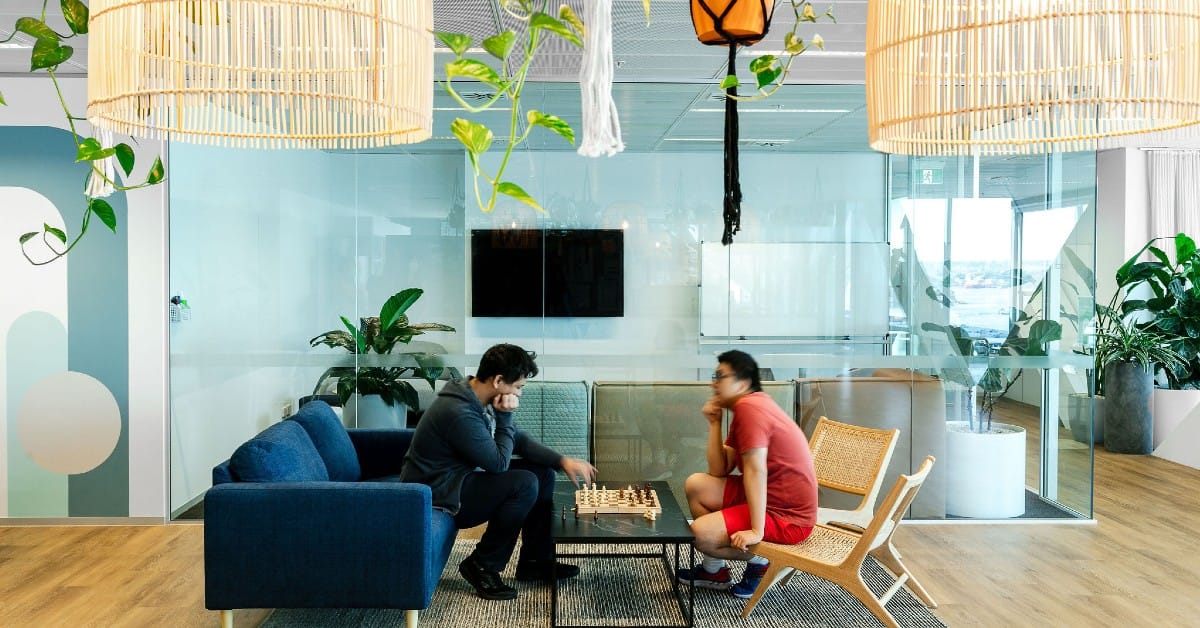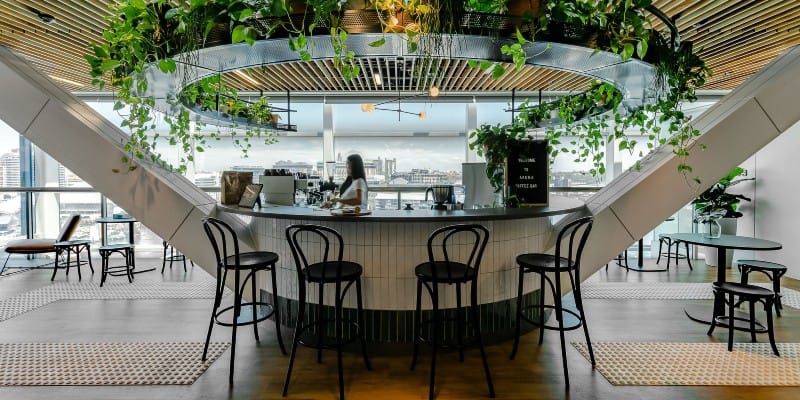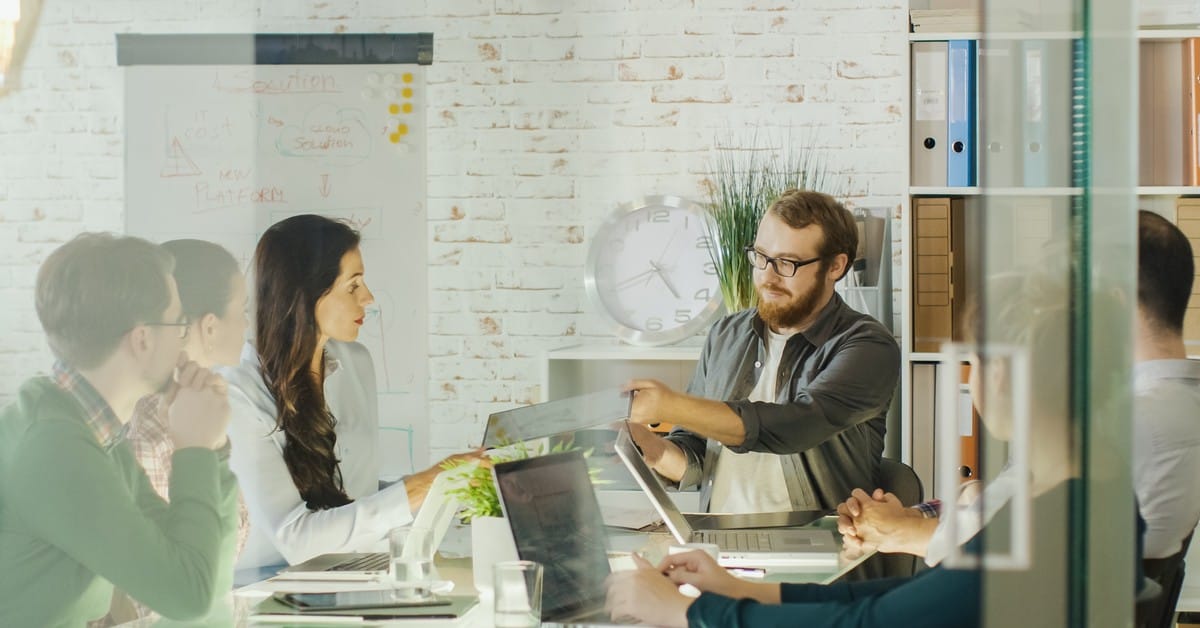Office meetings will be in the metaverse within three years, according to Microsoft co-founder Bill Gates. He predicts that virtual meetings will evolve from the current 2D images to full 3D avatars.
“Metaverse” is the latest buzzword going around the tech industry that can potentially revolutionise the way we live, work and play. Some are saying the metaverse is the future of work, and the office will be a thing of the past.
But what is the metaverse, how will it impact the way we work, what's the best way to prepare and when will we actually see and experience it? And the big one:
Will the metaverse really replace the physical office?
Spoiler alert: the physical office will not only live on, but even be enhanced by the metaverse.
What is the metaverse?
“We believe the metaverse will be the successor to the mobile internet, we’ll be able to feel present – like we’re right there with people no matter how far apart we actually are.” (Mark Zuckerberg, Facebook CEO)
Some are calling it the next evolutionary step for the internet - web 3.0. The metaverse renders everything in 3D rather than the current 2D visuals we currently see today. It “brings the internet to life”, and builds a virtual world of interconnected communities where everyone can meet, work and play.
Coined by Neal Stephenson in his 1992 novel “Snow Crash”, the term metaverse refers to a digital environment that enables people to interact as avatars, using VR headsets and glasses. Think of it as a cyber realm where you can move and act in the same way as in the physical world, and directly interact with other people from any location on the planet as if they were standing right next to you.
How the metaverse will change the way we work?
The metaverse will go beyond the current Zoom or virtual meeting, and transform the way we work and interact with our colleagues and teams. Here are some ways the metaverse will change the future of work:
More immersive experience and seamless collaboration
According to Mark Zuckerberg, the metaverse will open up new forms of work where people no longer need to be physically together to “feel present, collaborate or brainstorm.” Using 3D avatars, workers from different locations can meet in virtual spaces to interact, communicate and collaborate as if they were sitting side-by-side in the same meeting room. This will allow people to do more online like manage projects, design products or buildings, and other team-based activities. Also, with VR headsets and motion capture gloves, coworkers can see everyone’s expressions and body language.
Increased worker convenience and flexibility
Since the metaverse enables a work from anywhere model, employees are no longer confined to their workstations and cubicles. They are free to work at home, at a cafe, at regional locations, or at any other area where they feel comfortable and creative. Also, long commutes to work will be a thing of the past, since all interactions would be happening in a virtual environment.
New work opportunities
The metaverse will not only bring change in the workplace, but also open new work opportunities as businesses adapt to the new digital environment. There will be new jobs created that do not currently exist - similar to social media jobs that would have been unthinkable before the internet. Also, some jobs today may need to change to accommodate this new virtual world, providing workers opportunities to learn and re-skill. Lastly, there will be new types of companies that may emerge to manage and facilitate the metaverse, delivering more job opportunities for people in any location.
When will the metaverse happen?
That’s one difficult question to accurately answer. Although some of the needed technologies to enable the metaverse already exist, they are still in the early stages and have limited capabilities. Some say the full metaverse may take years to complete and launch. There are still a number of challenges that need to be addressed, including:
- The need for an online infrastructure that can handle millions, if not billions of people using the metaverse at the same time.
- Seamless and reliable internet connection for people in every location.
- The need for VR headsets and other necessary accessories to be more comfortable, cost-effective and easier to use.
- Threats to data privacy and security.
So, will the metaverse replace the physical office?
We know that it will take years before the technologies needed can mature and enable a full metaverse - but even if they do, the metaverse will not replace the physical workplace. Here are some of the reasons why the office will still play a crucial role in the future of work:
In-person interaction is a fundamental part of being human
Our need for in-person or face to face interaction is the biggest reason why the metaverse will not replace the physical workplace. The office is not just a place to work. It is where people can collaborate, socialise, and build lasting relationships. Working from home during the COVID-19 pandemic has made people realise their need for some sort of physical connection. And the office provides a space where workers can establish this connection, have those ‘water cooler’ moments, and work creatively as a team.
Spending 8 hours each day in the virtual world won’t be practical (or healthy)
Online gaming is perhaps the closest thing we have now to experiencing the metaverse. Online games allow you to create your characters or avatars and interact with other people through a virtual gaming environment. This can be fun and exciting but highly addictive. And there are health risks associated with too much online gaming, including sleep deprivation, insomnia and circadian rhythm disorders, depression, aggression, and anxiety. So, spending your 8-hour workdays in the metaverse may have similar effects, and probably will be detrimental to your physical and mental wellbeing.
People have different work styles
All employees need to be in the metaverse for it to work as a virtual workplace. However, this single working environment may not work for everyone involved. As we’ve seen during the pandemic, people have their own style of working. Some are more creative and productive at home, while others feel more focused and motivated at the office. Having the flexibility to work where people feel most comfortable, whether physical or virtual, enables them to not only be more productive, but also be more inspired to deliver their best work.
With the hybrid work model becoming the norm across many industries, we believe the metaverse won’t replace the physical office, but can actually enhance the experience. The metaverse can bridge the gap between the digital and physical environments. It can bring both on-site and remote workers into an immersive and engaging virtual workplace, where they can collaborate, brainstorm, and work together as one team. This would allow people to work seamlessly between the metaverse and the physical office - creating a happier and more inclusive culture, as well as a more creative and productive work environment.
Want to learn more about the future of work? Read our guide to the future of work in Australia.







